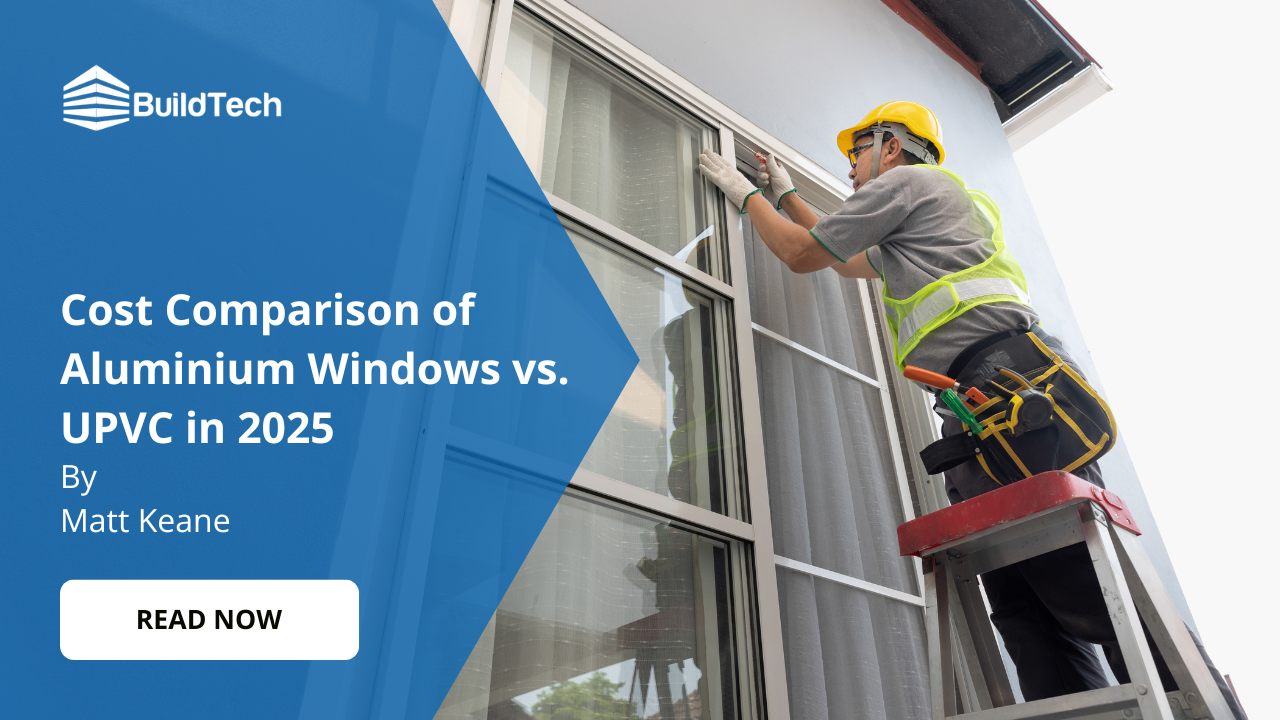Are you looking for the cost comparison of aluminium windows vs. UPVC in 2025? Choosing the right window material is not just about looks—it's about finding the perfect balance between cost-effectiveness and energy efficiency for your construction or renovation project.
As we compare the costs of Aluminium and UPVC windows in 2025, we'll get into which option will help to sustain the planet.
In this blog, we will help you to explore the cost differences between Aluminium and UPVC windows in 2025. Find out which material is best for energy efficiency and insulation.
Choosing the right window material can depend on style, maintenance needs, and overall design preferences. Aluminium and uPVC are both widely used across homes in Ireland. Each option brings different qualities to consider before making a decision.
uPVC is often chosen for its ease of upkeep and solid performance. Aluminium offers a more minimal, modern frame with strong visual appeal. The best choice can vary depending on your priorities and the look you’re aiming for.
If you're thinking about updating your windows, BuildTech is available to assist. We can talk through different styles and help you explore what might suit your home.
What is the Cost Comparison of Aluminium vs. UPVC Windows?
When deciding between aluminium and UPVC windows for your home or building in 2025, understanding the cost implications of each option is crucial.
Initial purchase and installation costs
Aluminium windows are generally more expensive than UPVC windows due to the higher cost of materials and manufacturing.
If your home has 4 windows that need replacing, you can expect to pay around €3,200 for double glazed aluminium windows, whereas for a 10 window home, you will pay an average of €12,500, whereas UPVC is typically UPVC cost-effective, ranging from €300 to €350 per sqm.
The installation costs also tend to be higher for aluminium due to the specialised skills required for handling and fitting the sturdier frames.
Long-term value and maintenance costs
Despite the higher initial cost, aluminium windows can be more cost-effective in the long run. They are known for their durability, often lasting up to 45 years with minimal maintenance, compared to UPVC windows, which may need replacing sooner.
Aluminium is also more resistant to weathering and does not discolour or crack over time as UPVC might. This durability means fewer replacements and repairs, potentially saving money over decades.
Energy efficiency and utility savings
UPVC windows generally offer better insulation than basic aluminium frames, which can lead to lower heating and cooling costs.
However, modern aluminium windows with thermal breaks are designed to improve energy efficiency, narrowing the gap. The choice here will depend on your specific energy needs and climate.
Appearance and resale value
Aluminium windows offer a sleek, modern look that can boost the architectural appeal of a property, potentially increasing its resale value.
UPVC windows, while improving over the years in terms of design versatility, still have a broader market due to their cost-effectiveness and functional reliability.
Environmental impact
Aluminium is fully recyclable and has a lower environmental impact over its life cycle compared to UPVC, which is less eco-friendly to produce and dispose of.
This factor might influence environmentally conscious consumers or those looking to meet certain green building standards.
Understanding these cost factors will help you make an informed decision based on long-term value, maintenance, energy efficiency,overall look, and environmental impact.
Comparison of Aluminium vs. UPVC Windows in Terms of Energy Efficiency and Insulation?
Both types of windows offer unique benefits in terms of energy efficiency and insulation.
While UPVC may initially provide better insulation, the evolving technology of aluminium windows with thermal breaks presents a compelling option, especially for those who want a sleek look without compromising on energy efficiency.
UPVC windows: superior insulators
UPVC windows are widely recognized for their excellent insulation properties. Made from unplasticised polyvinyl chloride, these windows are not only cost-effective but also provide superb thermal efficiency.
The material inherently prevents heat loss, making UPVC windows a popular choice in regions with colder climates.
This can lead to significant savings on heating bills as UPVC windows help maintain a consistent temperature inside the home, reducing the need for excessive heating or cooling.
Aluminium windows: modern and efficient
Aluminium windows, while traditionally viewed as less insulative than UPVC, have seen significant advancements in recent years.
Modern aluminium windows now often feature a 'thermal break'—a plastic section between the inside and outside of the frame, which significantly reduces heat transfer.
This makes newer models of aluminium windows much more competitive in terms of energy efficiency.
Additionally, the strength of aluminium alloys for thinner frames and larger glass panes, increasing the potential for natural light and reducing lighting costs during the day.
Conclusion
We've explored the key differences between aluminium and UPVC windows, focusing on their costs, energy efficiency, and overall value for 2025.
Whether you prioritise thermal insulation, cost-effectiveness, or aesthetic flexibility, each material offers unique benefits. Aluminium provides durability and modern design, while UPVC offers superior insulation and affordability.
Choosing the right windows is crucial for both the comfort and energy efficiency of your property.
If you're considering upgrading your windows and need expert advise suitable to your specific needs, don't hesitate to contact BuildTech. Our team is ready to help you make the best investment for your home or business.


















